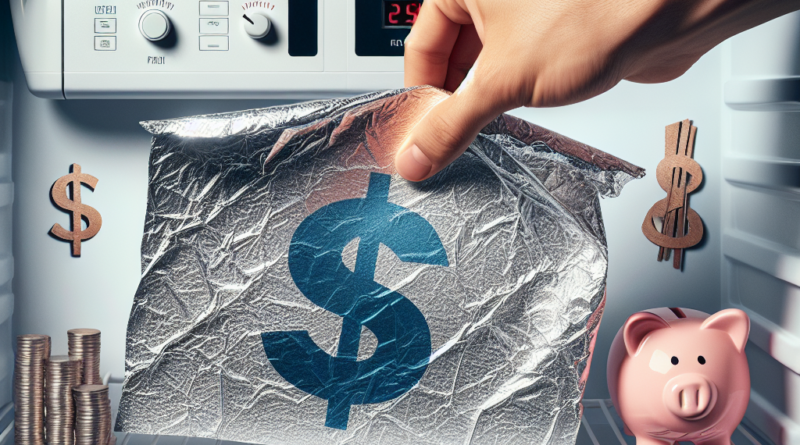“How Putting Aluminum Foil in Your Freezer Can Save You Money”
“`html
Dealing with Excess Ice in Your Freezer
Have you ever discovered your freezer engulfed in a thick layer of ice? It’s a common issue for many.
But beyond being an inconvenience, excessive ice buildup has even more annoying consequences.
This excess ice reduces the efficiency of the freezer, leading to increased energy consumption and taking up valuable storage space.
The Hidden Benefits of Aluminum Foil
What many don’t realize is that there’s a simple trick that can make a significant difference: using a sheet of aluminum foil.
It may sound bizarre, but placing aluminum in your freezer can help save time when defrosting and reduce energy costs, while also protecting your appliance from potential breakdown.
Let’s explore how it works.
Why Ice Accumulation is a Problem
Over time, it’s normal for ice to form in the freezer, but when it becomes too thick, problems arise.
Ice acts as an insulator between the freezer walls and the food that needs to be chilled.
The more ice accumulates, the less efficient the unit becomes.
This inefficiency forces the freezer to work harder to maintain the set temperature, resulting in increased energy consumption and, ultimately, higher electricity bills.
Moreover, a crowded freezer makes it less practical to store food effectively.
When ice obstructs air vents, it prevents cold air circulation, leading to uneven temperature distribution, which can degrade food quality.
Regular defrosting is essential to avoid these issues.
A Simple Solution
The solution is surprisingly simple: aluminum foil.
Covering the freezer’s interior walls with foil streamlines the defrosting process.
Aluminum has thermal conductive properties, enhancing heat transfer.
When it’s time to defrost, place a pot of boiling water in the freezer and close the door.
The heat and steam from the pot will distribute quickly, aided by the foil, melting ice in minutes.
Once the ice softens, you can easily remove it with a damp cloth or a plastic spatula.
Properly used boiling water won’t harm the appliance as the steam helps melt ice without direct contact with cold surfaces.
Just remember to keep the water in a covered pot to allow heat to spread gradually.
Saving Energy and Extending Appliance Life
The primary advantage of keeping your freezer ice-free is reduced energy usage.
A clean, defrosted freezer operates more efficiently, free from the insulating ice layer.
Furthermore, an efficient appliance is less likely to break down, prolonging its lifespan and saving you from future repair or replacement costs.
These savings translate into personal and environmental benefits.
However, remember that ice buildup isn’t only about time; how frequently you open the freezer matters too.
The more often it’s opened, the more moisture enters, leading to frost formation.
Aim to defrost the freezer at least every six months, or more often if you notice excessive ice.
Keeping your freezer efficient and free of ice is not merely about convenience; it’s a matter of energy and financial savings.
Using aluminum foil to simplify defrosting is a low-cost, effective trick.
Why not give it a try? You might enjoy lighter bills and a freezer functioning at its best.
“`




